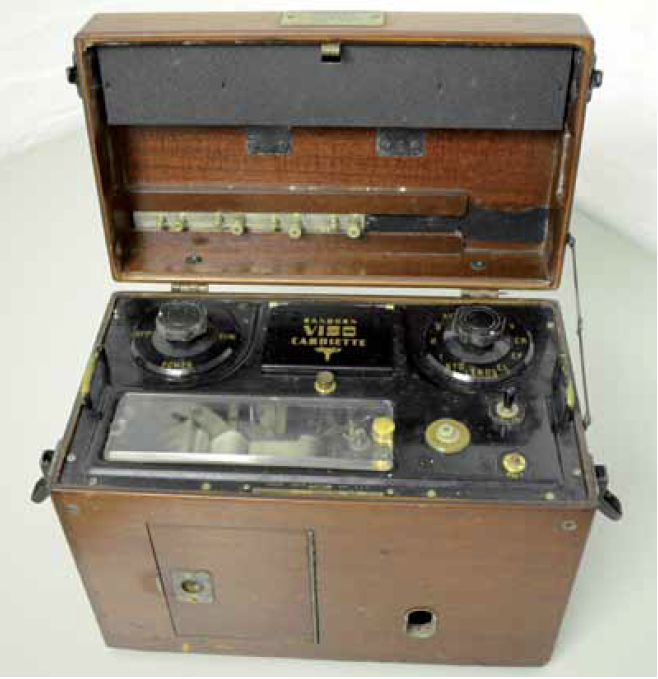Hong Kong Med J 2014;20:172 | Number 2, April 2014
© Hong Kong Academy of Medicine. CC BY-NC-ND 4.0
REMINISCENCE: ARTEFACTS FROM THE HKMMS
Portable ECG machine
Albert Chan, MD, FRCP (Glasgow)
Member, Education and Research Committee
Hong Kong Museum of Medical Sciences Society
Hong Kong Museum of Medical Sciences Society
The science of the electrocardiograph /
electrocardiogram (ECG) is one of the cornerstones
of modern cardiology. Its potential for applications
in patient care was realised by the development of
device (machine) that could record the ECG.
As early as 1676, scientists discovered that
animals generate electricity. In 1887, Waller was the
first to demonstrate electrical currents are produced
during beating of the human heart and can be
recorded from the skin’s surface. He was credited
with having performed the first ECG on a human.
The potential for application in patient care was
demonstrated when Einthoven, a Dutch physiologist,
invented the first ECG machine in 1903. It was much
more sensitive. For his achievements, he was awarded
the Nobel Prize in Physiology or Medicine in 1924.
He also assigned the letters P, Q, R, S, and T to the
various deflections (www.ecglibrary.com/ecghist.html).
The original machine required water cooling for the powerful electromagnets, needed five people
to operate, and weighed some 270 kg. The person
monitored had to place each limb in a bucket of salt
water and it was therefore not practical for clinical
use. However, there have been many advances in
ECG recording over the years. The instrumentation
has evolved from a cumbersome laboratory
apparatus to compact electronic systems, which are
reliable and portable and often include computerised
interpretation of the tracing.
It is not known when exactly ECG machines
first arrived in Hong Kong. However, ECG recording
was available when Queen Mary Hospital opened in
1937 (www.hkcchk.com/history.php). The Sanborn
Viso Cardiettee Electrocardiograph, model 51, in the
Museum’s collection (Figure) was a portable ECG
machine donated to the Museum by the Victory
Medical Laboratory Ltd / Dr HP Yew. It might be one
of the earliest portable ECG machines used in Hong
Kong.

Figure. Sanborn Viso Cardiette Electrocardiograph Model 51, specially made for Dr HP Yew. It was donated to the Museum by Victory Medical Laboratory Ltd, founded by Dr Yew in 1949. Dr Yew trained in cardiology at the Johns Hopkins Hospital, came to Hong Kong in 1948, and set up his practice at Victory House on Wyndham Street

